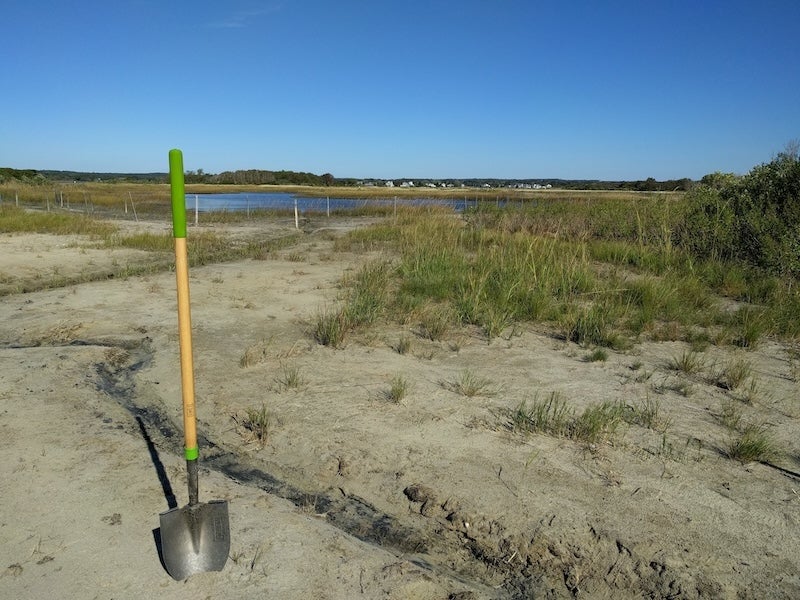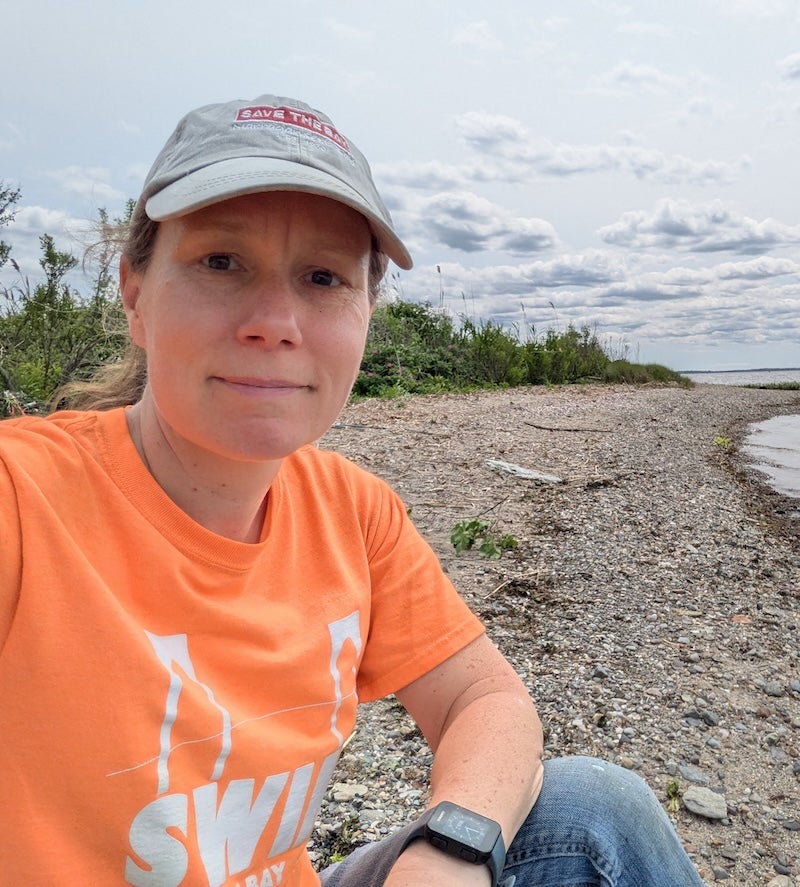While pretty to look at and so common they’re an unassuming part of the landscape now, the invasive species Phragmites australis can pose risks to the areas they are found in–including being a fire hazard and wiping out native species–and are difficult to eradicate.
As part of Save the Bay’s saltwater restoration work, Kate McPherson ’03 works to get the invasive species under control. In the Ocean State, phragmites can become established on a saltmarsh when freshwater gets trapped on the marsh surface.

“Our habitat team creates small shallow drainage channels called runnels which help drain the freshwater off the marsh,” she says. “The runnels are dug in a gently winding fashion to mimic natural water flows, minimize erosion, and reduce conditions that allow invasive Phragmites australis to overwhelm the marsh.”
Because of ever-changing soil, vegetation, and tidal conditions, the runnels need to be maintained annually to reduce the height and vigor of the plants.
Special permits from either the Rhode Island Department of Environmental Management (RIDEM) or the Coastal Resources Management Council (CRMC) are required to cut up or dig out phragmites found in wetlands. They are not easily pulled out of the ground by hand, and using equipment can result in soil disturbance that ends up causing more damage to the wetlands than the plant itself.
“Invasive phragmites thrive in disturbed soils so sometimes efforts to restore a wetland don’t work and the plant comes right back,” McPherson says. “We need to think about why phragmites is growing in a place and address those reasons. It often comes down to too much nutrient pollution.”
Rhode Islanders can help mitigate the problems and risks of phragmites by avoiding nutrient pollution in their home lawns.
“Letting your lawn get a little longer makes it more resistant to drought, and leaving grass clippings on it instead of bagging them reduces evaporation and provides natural nutrients when they break down,” McPherson says. “Phragmites thrives in areas where freshwater is seeping into coastal areas so overwatering can contribute to this freshwater seep, and they also thrive in high nutrient waters. Over-fertilizing or fertilizing at the wrong time of year can contribute to its spread and vigor.”
As an undergraduate majoring in wildlife and conservation biology at URI, McPherson says she enjoyed wildlife field tech jobs–positions that had her finding ovenbird nests and mapping their territories, searching for vernal pool amphibians when they weren’t breeding, and investigating acid rain’s impacts on birds that use spruce habitats in the Green Mountains–but she ultimately wanted a more sustainable career option.
“I followed advice from older students and took a field botany course with Professor Christopher Nerone as a summer session to prepare me for Professor Frank Golet’s legendarily difficult wetlands classes,” she says. “These courses prepared me for a 20-year career as a Professional Wetland Scientist, first at the RIDEM reviewing development proposals and now with Save The Bay as an environmental advocate.”
For the past seven years, McPherson has served as Save the Bay’s Narragansett Bay Riverkeeper, working to protect, restore, and promote stewardship of the vast network of remarkable rivers within the Narragansett Bay watershed.
“Generally the riverkeeper is the eyes and ears for the bi-state watershed that contributes to Narragansett Bay,” she says. “I advocate for strong environmental laws that protect wetland and water resources, take complaints from community members that see pollution or unauthorized filling, participate in habitat restoration projects, review large development proposals, and patrol the rivers that drain to Narragansett Bay looking for opportunities and threats to river health.”
For more information on ways to contribute to the health of Narragansett Bay, even from miles away, check out Save The Bay’s Bay Friendly Living Guide.

